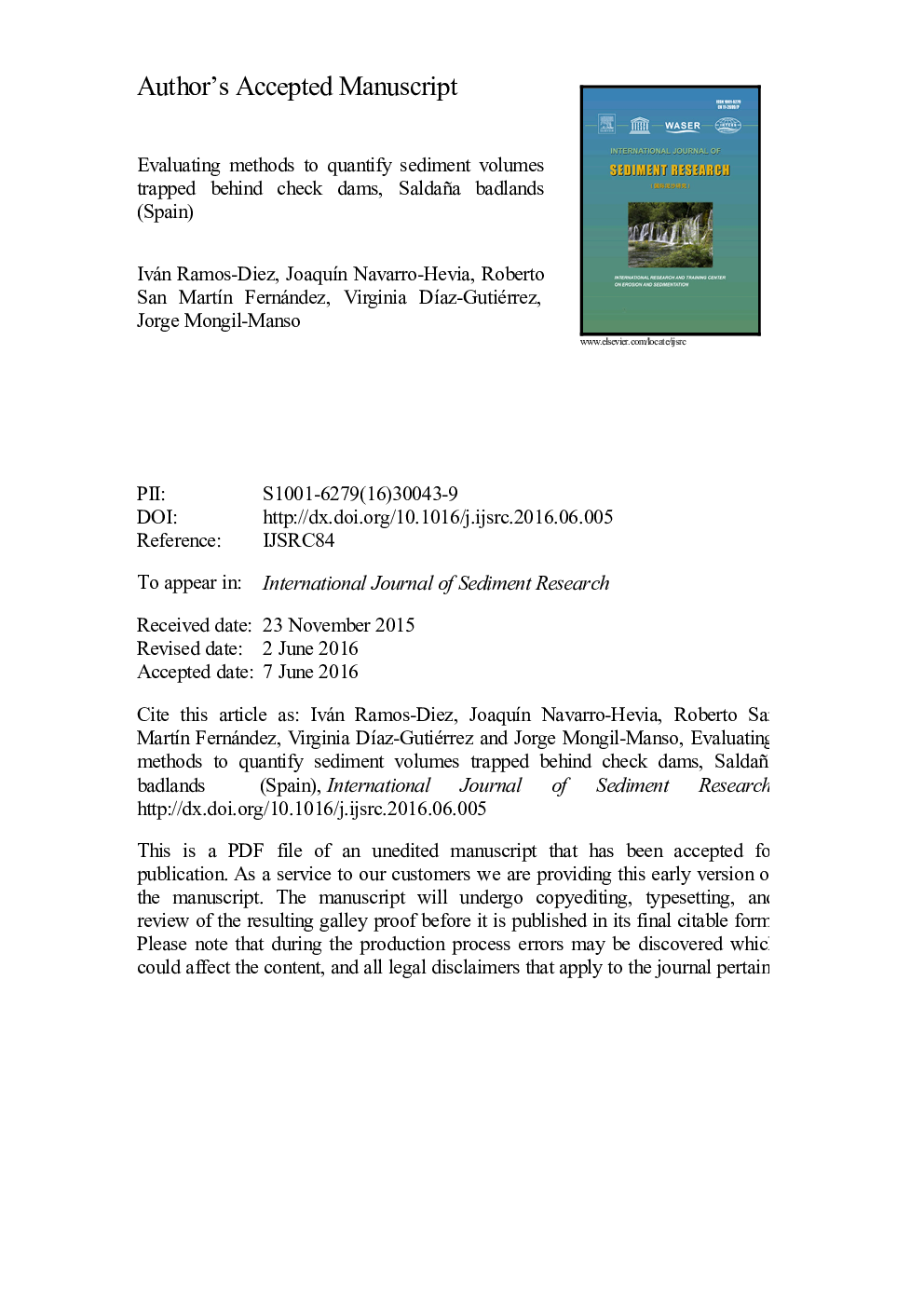| Article ID | Journal | Published Year | Pages | File Type |
|---|---|---|---|---|
| 8911193 | International Journal of Sediment Research | 2017 | 46 Pages |
Abstract
The determination of sediment yield in catchments based on the sediment trapped by check dams is becoming a subject of interest. In fact, several methods have been developed in recent years to estimate the sediment retained by check dams. The complexity, precision and accuracy of each method vary greatly. In this study, we evaluate the sediment trapped by check dams comparing the Sections method respect to the Prism, Pyramid, DTMs and Trapezoid methods. We analyzed a sample of 25 check dams (αâ1=90%; ϵ=10%) in the Saldaña badlands (Spain). The results showed that the Sections method offered a volume of retained sediment between the others, which gave an absolute variation from 22% to 40%. The high variability of the check dam and sediment wedge sizes made necessary to compare methods in groups combining both characteristics. No significant differences in sediment volumes could be found between the methods for very small (height (h): 1.8-2.3 m; trapped volume (V): 6-102 m3) or large check dams (h>2.3 m; V: 165-387 m3), while significant differences are found for small (h<1.5 m; V: 1â229 m3) or middle-sized check dams (h: 2.2-3.2 m; V: 65â235 m3). Nevertheless, volume differences between groups ranged up to ±25%. For these reason, the size of the check dam, the shape of the sediment wedge and the accuracy of the measure methods must considered when selecting an appropriate method to obtain the volume of retained sediment by check dams. A correct estimation of the sediment retention is needed to evaluate the role and efficiency of check dams in restoration projects or to estimate sediment yields.
Related Topics
Physical Sciences and Engineering
Earth and Planetary Sciences
Geochemistry and Petrology
Authors
Iván Ramos-Diez, JoaquÃn Navarro-Hevia, Roberto San MartÃn Fernández, Virginia DÃaz-Gutiérrez, Jorge Mongil-Manso,
